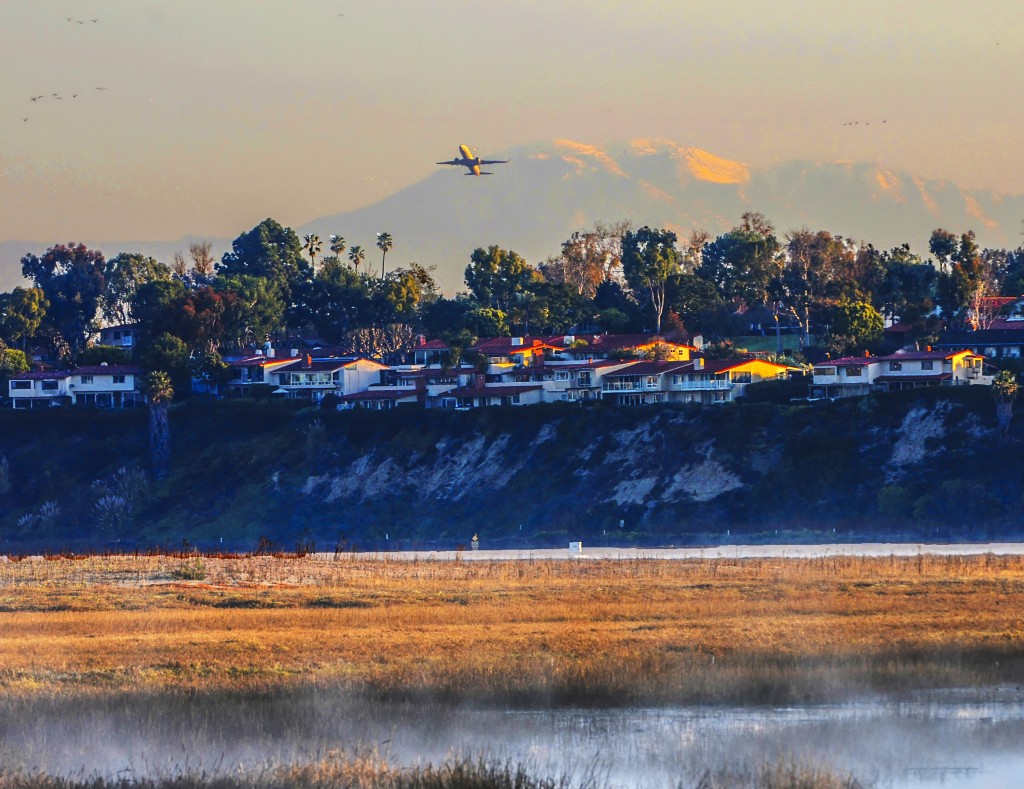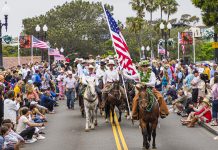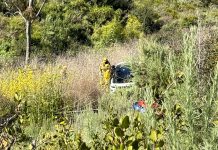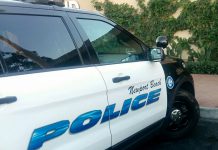
— NB Indy File Photo by Lawrence Sherwin ©
The future of flight paths at John Wayne Airport is still up in the air, as the Newport Beach City Council learned this week.
City manager Dave Kiff discussed two main issues at Tuesday’s study session: MagVar, which involves the magnetic pole variation, and NextGen, the Federal Aviation Administration’s effort to make air traffic more efficient and safe.
“This has come before us as a reaction by the community to existing issues that are ongoing in the neighborhoods as well as the anticipation of change resulting from NextGen,” Petros said.
NextGen is a nationwide initiative that involves narrow, more precise and repeatable flight paths aimed to optimize airspace. It’s meant to save fuel, reduce delay, and increase capacity.
Locally, the plan detailing the changes that the NextGen initiative is proposing is called the Southern California Metroplex project. SoCal Metroplex is “managing NextGen above our cities,” Kiff explained.
The SoCal Metroplex includes 21 airports, including JWA. It may involve changes in flight paths and altitudes, but, according to the FAA, would not result in ground disturbance or increase the number of flights.
John Wayne Airport and the city of Newport Beach are just a small part of the SoCal Metroplex, which stretches from Santa Barbara to the Mexican border, explained Councilman Tony Petros, who sits as chair of the city’s Aviation Committee. The SoCal project is just one of many Metroplex programs being proposed by the FAA across the country, he added.
The FAA is currently reviewing comments and concerns regarding the draft Environmental Assessment document on the SoCal Metroplex project. Newport Beach and Orange County officials, along with other Southern California counties and cities, organizations and residents, voiced their concerns to the FAA about the project.
The FAA could respond as early as one month after the comment period ended (on October 8), Petros pointed out.
They could then issue a Findings Of No Significant Impact report and procedurally move forward, as they have with most of the other Metroplexes across the country.
In the city’s comment letter to the FAA, officials expressed concern for the FAA’s “repeated, rapid processing and adoption” of the draft EA.
“Rather than rush through the environmental analysis, the city requests that the FAA take the concerns expressed in this letter seriously and not prepare a Final EA and FONSI in haste,” the letter reads.
On the other hand, they could be “compelled, by virtue of the comments, to draft an environmental impact statement,” which would study pollutants, noise and more, Petros explained.
They could also come back with a revised or supplemental environment assessment, city attorney Aaron Harp added.
If the plan does move forward as the FAA has proposed, NExtGen would change three departure paths at JWA. The new routes will generally follow the current departure procedure called STREL, Kiff noted.
The STREL route is the only RNAV (area navigation) route currently being flown. There are two non-RNAV routes being used.
RNAV flights are more precise, repeatable, consistent, and narrow. Non-RNAV routes are imprecise and there is more variation and fanning.
The FAA is proposing to replace the two non-RNAV flights with three new RNAV flights. This would mean all departures would follow narrower, more precise routes.
The current RNAV route name STREL would change to PIGGN and planes would start taking this path in December 2016. Approximately 45 to 50 percent of flights will use this route.
The non-RNAV departure path known as MUSEL7 creates nearly one mile of variation over the peninsula, Kiff pointed out on a map displaying the paths from all the planes that used MUSEL7 in 2012. This route name would become FINNZ and would start in March 2017. Approximately 10 percent of flights would use this new path.
The CHANL2 path would change to HAYLO and flights would begin using it in March 2017. About 40 to 45 percent of flights out of JWA would use this route.
While NextGen won’t affect flights until 2016 and 2017, MagVar is affecting flights right now, Kiff explained.
MagVar involves runway headings that were given a new numeric designation in September 2014. The departure plates were re-done and officials think there was an error that directed flights too far west, Kiff explained. The runways did not move, he emphasized.
It has not been fixed yet, but the Federal Aviation Administration is working on corrections, he added.
Kiff also went over the city’s options, which include dispersing the paths even more, focus on the STREL path, a higher altitude departure, create new paths, or add more turns in the upper bay.
“Avoid actions that will impact new communities,” Kiff recommended.
New communities meaning the neighborhoods outside the wide fanning routes shown in the 2012 maps, he clarified. The FAA thinks about fanning in very small terms, they’re never going to look at something widespread over several miles, he added.
Balboa Island resident Lee Pearl said the staff recommendation to not impact new communities is “disappointing,” in terms of Balboa Island ever getting any relief, Pearl said. Any change, whether it’s minor or major, will impact other areas, he noted.
“I don’t feel as though the city understands the issue that we’re facing,” Pearl said. “It’s a pretty burdensome future for Balboa Island.”
A handful of public speakers commented about Balboa Island taking the brunt of the problem, too frequent flights over Newport, fixing the MagVar error, supporting the dispersion idea, and more.
Staff made a few other recommendations, including that the city advocate that TOING (a noise monitor on top of the knoll near Newport Dunes) be restored and the departure procedures be studied. They also asked for a 180-day test period for NextGen, and no changes made to Policy A-17.
There’s not enough information from the FAA yet, Petros commented, and without knowing exactly what the FAA plans on doing, the council shouldn’t take any action yet.
They need to take a measured approach to the issue, Mayor Ed Selich agreed, and continue to work with county, state officials, FAA and the community.
“The process still hasn’t ripened to the point where we know what the FAA is going to do,” Petros said. “Let’s continue to play this out… (and keep the dialog going) so when we do have an iron to strike we know which direction it’s going to fall.”
For more information, visit newportbeachca.gov/trending/projects-issues/john-wayne-airport/departure-overview, metroplexenvironmental.com, faa.gov/nextgen, noflyday.org, and search “Newport Beach” on change.org.
To read the city’s letter to the FAA, visit newportbeachca.gov/home/showdocument?id=21162.




